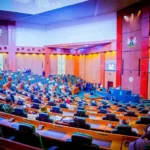
As visitors moved from the gallery to the inner rooms of the National Museum, Onikan, Lagos, to inspect array of stolen but repatriated monuments – the management of the National Commission for Museum and Monuments (NCMM) had put on display, there seemed to be a unanimity as to the general feeling.
If anything, attendees at the opening of the exhibition: “Repatriated Nigerian Cultural Property”, hosted by NCMM, said they were left with two-type impressions. For the visitors among them, there could not have been a better way to come in contact with sophisticated monuments of a nation that were once taken away but have now found their way back to their root. And for management members of NCMM, seeing the monuments was reward for years of struggle, advocacy and diplomacy.
Although historians are quick to recall that Africa had been having contacts with the outside world since the seventh century, many have nonetheless asserted that the scrambling for the partitioning of the continent which began immediately after the 1884/1885 Berlin Conference by major European powerhouse and which subsequently led to widespread colonization of its territory, brought about brutal assault of its values, culture and heritage.
The arrest and banishment of King Jaja of Opobo in 1887 and the invasion of Benin Empire in 1897 by the British army, among others have indeed been referenced as major turning points in colonial escapade in Africa. But beyond the hijack of political and economic power, historians accused the invaders of stealing many artifacts and historical monuments while wreaking havoc on their conquered territories.
Today, many of such artifacts, especially those from Benin, Ife, Nok and Igboukwu arts, among others can now be found in major museums, art galleries and private homes of the wealthy in major European countries.
Pathetically, the stealing and illegal hijack of artifacts are not limited to the colonialists who invaded African communities, some criminal minded individuals have also been accused of conveying out of the country illegally, many of these artifacts for pecuniary gains.
To stem the tide, the federal government said it inaugurated the Repatriation Unit under the office of the Director General of National Commission for Museum and Monuments (NCMM) which in the last few years has made remarkable progress in recovering some of the stolen monuments.
For instance, in January 2013, former French Ambassador to Nigeria, Jacques Champagne de Labriolle handed over to the former minister of Tourism, Culture and National Orientation, Chief Edem Duke, five stolen artifacts of Nok origin. He said the artifacts were seized in France, by the French Customs in Paris in August 2010, as part of the French Customs watch and fight against illegal transportation of cultural goods. Similarly, in June 2014, eight Nigerian artifacts stolen and ferried to the United States of America were returned to the country by the Museum of Fine Arts.
And in June 2017, two statues, suspected to have been stolen from Benin Empire during the 1897 invasion of the empire were also returned by one Mark Walker, who took the decision after painstaking inquiries from the Richard Lander Society about their origin. Walker is the great grandson of Captain Philip Walker, who was part of the British army that participated in the Benin invasion in 1897.
Instructively, more foreign governments and personalities are keying into the campaign being spearheaded by NCMM to get some of the stolen artifacts repatriated to their countries of origin, especially Nigeria. In fact, at the opening of the exhibition: “Repatriated Nigerian Cultural Property”, the governments of USA, South Africa, Switzerland and France were specifically applauded for their co-operation and commitment in seeing to the return of the stolen monuments.
“As a country, the French government recognizes the importance of returning to the country of origins, stolen artifacts. We see it as part of our international obligation and it is the reason we have consistently supported every move that will see to the return of these artifacts. So, without any iota of doubt, the French government will continuously work with the Nigerian government to make a success of this,” Pierre Cherrwew, the Media Adviser at the French Embassy, Nigeria, said.
The Minister of Information and Culture, Alhaji, Lai Muhammed, who declared the exhibition open and also led the delegation that inspected the repatriated artifacts said the acknowledgement of the efforts of the Nigerian Customs and the foreign governments was borne out of the their respect of the Red-List Agreement of 1997, that declared the export of those Nigerian cultural property illegal.
“These border interventions and return of these cultural goods will go a long way in further cementing the cordial and fruitful relationship between our countries and is a testament to the commitment of this administration to ensure that all our treasures are returned ‘Home’ in Nigeria, where they rightly belong. It will go a long way to energise our cultural relationship as well as diplomatic relations,” Muhammed said.
According to the minister, the categories of archaeological items on the Red-List includes: the NOK terra-cotta and the related terra-cotta of Sokoto and Katsina; terra-cotta and bronzes of Ife; Esie Soap Stone; terra-cotta and bronzes so-called SAO from the north east of Nigeria.
“These are heads or whole figurines, mainly effigies, but occasionally representations of animals (in most cases snakes). They are all of variable sizes from almost a life size head to other smaller representations. All of these are exported to growing art markets of Europe and America,” he said.
The minister said by this singular gesture, the leadership of NCMM has demonstrated beyond every reasonable doubt that it is committed to preserving the nation’s values, cultures and traditions.
The minister was however quick to advise that in order not to roll back the successes that had so far been recorded, the NCMM will need to double its efforts in checking the illicit trade in cultural property.
The NCMM Director General, who could barely contain his excitement on the feat his leadership had attained, said, “our gathering here today is a celebration of the return of some of our cultural property that were ‘lost’, carted away, looted or stolen over the years and adorn museums, galleries and even private homes in Europe and America. Efforts at repatriating them over the years did not yield much result due to the complex nature of the issues involved such as national and international laws, conventions, politics and diplomacy”.
The NCMM Director General further explained how his commission was able to put in place what he called “pragmatic, reconciliatory and collaborative” efforts which cemented long-lasting relationship with some European museums, especially after the 2009 exhibition of some selected Benin artifacts in Austria.
He said “the collaboration opened doors for fruitful engagements with museums and other public institutions around the world with significant Nigerian art works in their collection and that made it possible for some of the lost works to be returned.”

 Join Daily Trust WhatsApp Community For Quick Access To News and Happenings Around You.
Join Daily Trust WhatsApp Community For Quick Access To News and Happenings Around You.


